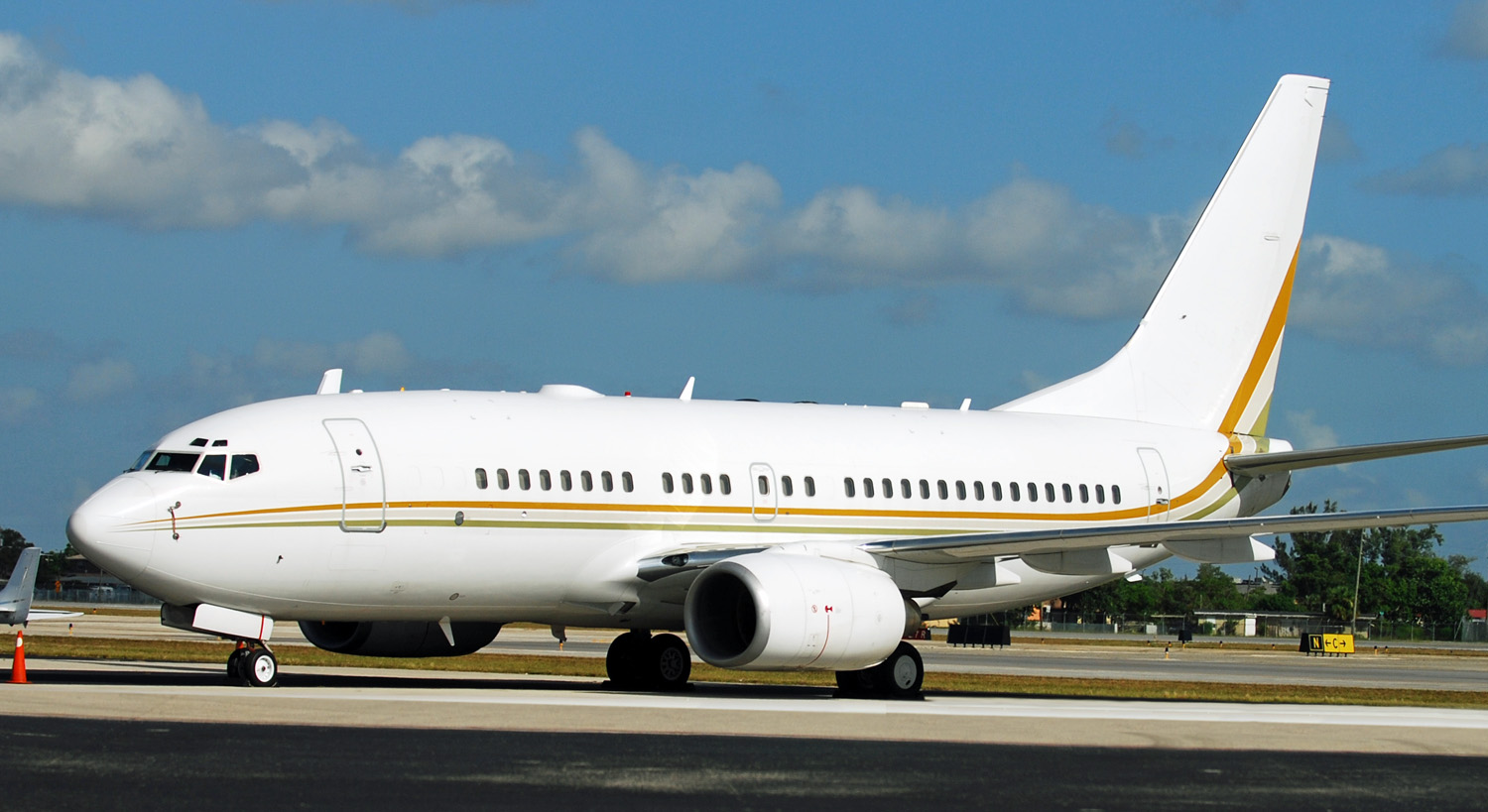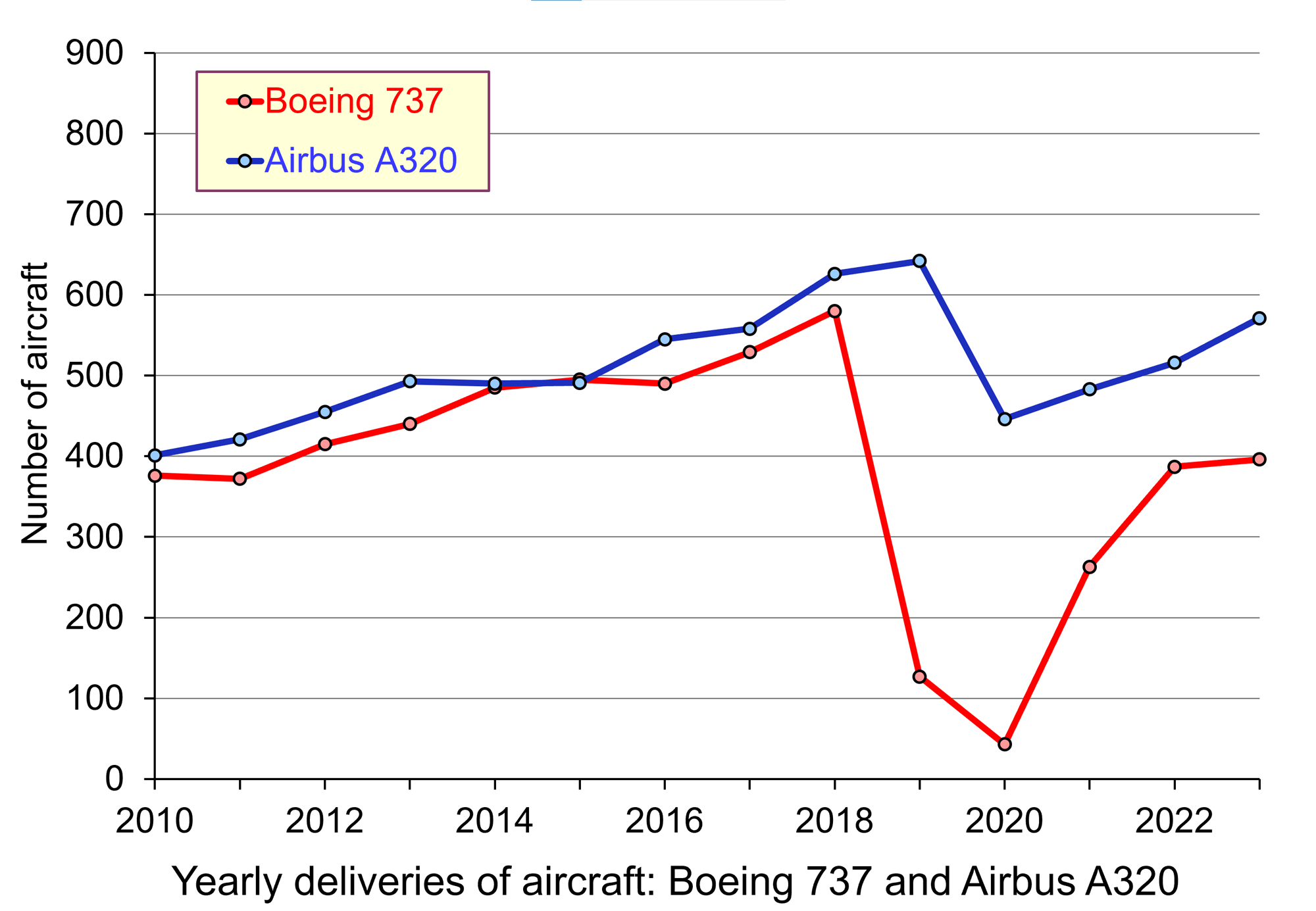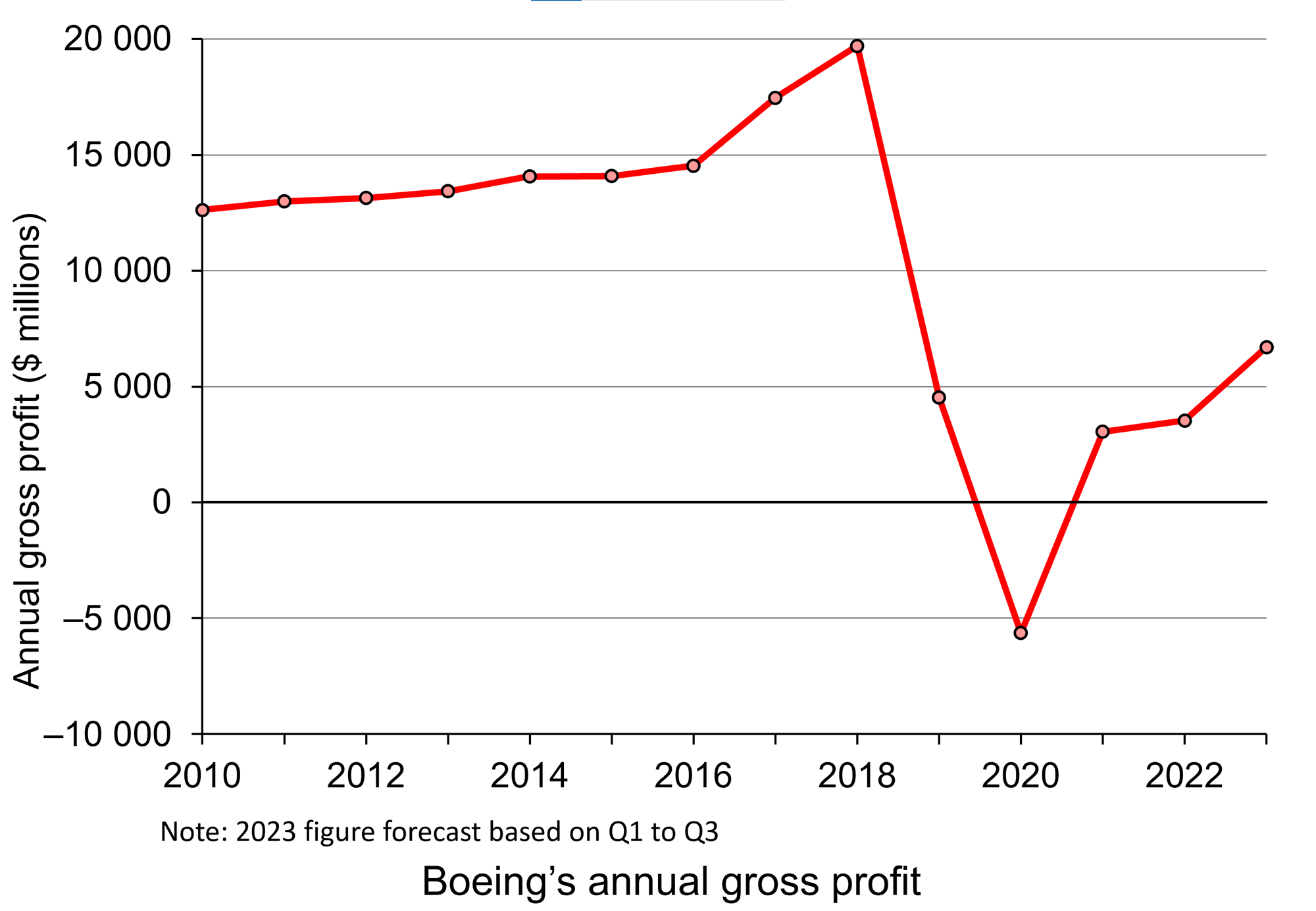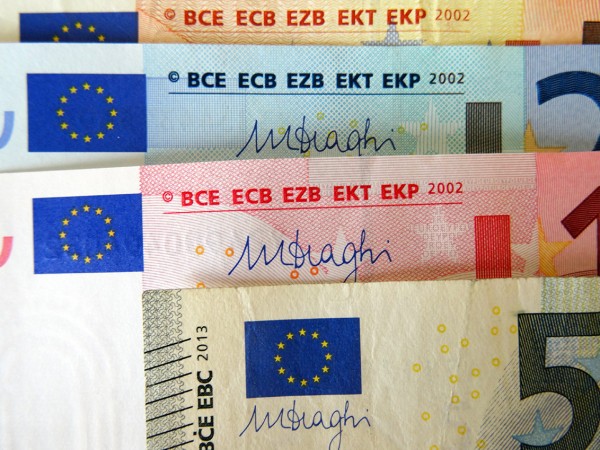 The traditional theory of the firm assumes that firms are profit maximisers. Although, in practice, decision-makers in firms are driven by a range of motives and objectives, profit remains a key objective for most firms – if not maximising profit, at least trying to achieve profit growth so as to satisfy shareholders, retain confidence in the company and prevent the share price from falling. After all, if the company is profitable, it is easier to fund investment, either from ploughed-back profit, borrowing or new share issue. And greater investment will help to drive profits in the future.
The traditional theory of the firm assumes that firms are profit maximisers. Although, in practice, decision-makers in firms are driven by a range of motives and objectives, profit remains a key objective for most firms – if not maximising profit, at least trying to achieve profit growth so as to satisfy shareholders, retain confidence in the company and prevent the share price from falling. After all, if the company is profitable, it is easier to fund investment, either from ploughed-back profit, borrowing or new share issue. And greater investment will help to drive profits in the future.
But does the pursuit of profit and shareholder value as the number-one objective actually lead to higher profit? It could be that a prime focus on other things such as consumer satisfaction, product design and value, innovation, safety, worker involvement and the local community could lead to greater long-term profit than an aggressive policy of marketing, cost cutting and financial rejigging – three of the commonest approaches to achieving greater profits.
Boeing disasters
In 2018 and 2019 there were two fatal crashes involving the new 737 MAX-8 aircraft. On 29 October 2018, Indonesia’s Lion Air Flight 610 crashed into the Java Sea; all 189 people on board died. On 10 March 2019, Ethiopian Airlines Flight 302 similarly crashed; all 157 people on board died. Both disasters were the result of a faulty automatic manoeuvring system. The company and its CEO, Dennis Muilenburg, knew about issues with the system, but preferred to keep planes flying while they sought to fix the issue. Grounding them would have cost the company money. But taking this gamble led to two fatal crashes. This damaged the company’s reputation and cost it billions of dollars.
 The US Securities and Exchange Commission (SEC) investigated the cases and found that the company had made false statements about the plane’s safety and had put ‘profits before people’. But putting profits first ended up in a huge fall in profits, with the 737 MAX grounded for 20 months.
The US Securities and Exchange Commission (SEC) investigated the cases and found that the company had made false statements about the plane’s safety and had put ‘profits before people’. But putting profits first ended up in a huge fall in profits, with the 737 MAX grounded for 20 months.
Since the crashes there have been several other issues with various critical systems, including stabilisation, engines, flight control systems, hydraulics and wiring. In December 2023, Boeing asked airlines to inspect its 737 MAX planes for a potential loose bolt in the rudder control system.
On 5 January 2024, Alaska Airlines Flight 1282 experienced an emergency. A window panel on the 737 MAX-9 aircraft, which replaced an unused emergency exit door, blew out and the cabin depressurised. Fortunately the plane was still climbing and had reached only just under 5000m – less than half of the cruising altitude of over 11 500m. The plane rapidly descended and safely returned to Portland International Airport without loss of life. Had the incident occurred at cruising altitude, the rush of air out of the plane would have been much greater. Passengers would be less likely to be wearing their seat belts and several people could have been sucked out.
The Federal Aviation Administration (FAA) temporarily grounded 171 MAX-9s for inspections. It found that several planes had loose bolts holding the panels in place and could potentially have suffered similar blow outs.
Profits rather than safety?
Critics have claimed that the corporate culture at Boeing prioritised profit over safety. This was made worse in 2001 when company headquarters moved from Seattle to Chicago but production remained at Seattle. The culture at headquarters became sharply focused on financial success. Boeing was under intense competition from Airbus, which announced its more fuel-efficient version of the A320, the A320neo, in 2010, with launch planned for 2015. Boeing’s more fuel-efficient version of the 737, the 737 MAX, was announced in 2011, scheduled for first delivery in 2017. Since then, Boeing has been keen to get the 737 MAX to customers as quickly as possible. Also, Boeing has sought to cut manufacturing costs to keep prices competitive with Airbus.
Despite warnings from some Boeing employees that this competition was leading to corners being cut that compromised safety, Boeing management continued to push for more rapid and cheaper production to fight the competition from Airbus.
The aircraft industry is regulated in the USA by the Federal Aviation Administration (FAA). In 2020, the House Committee on Transportation and Infrastructure produced a detailed report on the industry. It found that the FAA delegated too much safety certification work to Boeing. This was a case of regulatory capture. It was also accused of sharing the goal of promoting the production of US-based Boeing in its competition with European-based Airbus.
Effects on profits
 But rather than a focus on profit leading to greater profits, safety issues have led to groundings of 737s, a fall in sales and a fall in profits. The first chart shows deliveries of 737s slightly lagging A320s from 2010 to 2018. Since then deliveries of 737s have fallen well behind A320s. In terms of orders for all planes, Boeing was ahead of Airbus in 2018 (893 compared with 747). Since then, Boeing has significantly lagged behind Airbus and in 2019 and 2020 cancellations exceeded new orders. The January 2024 incident and subsequent groundings are likely to erode confidence, orders and profits even further.
But rather than a focus on profit leading to greater profits, safety issues have led to groundings of 737s, a fall in sales and a fall in profits. The first chart shows deliveries of 737s slightly lagging A320s from 2010 to 2018. Since then deliveries of 737s have fallen well behind A320s. In terms of orders for all planes, Boeing was ahead of Airbus in 2018 (893 compared with 747). Since then, Boeing has significantly lagged behind Airbus and in 2019 and 2020 cancellations exceeded new orders. The January 2024 incident and subsequent groundings are likely to erode confidence, orders and profits even further.
 As you can see from the second chart, profits fell substantially in 2019, and with COVID fell again in 2020. They have not recovered to previous levels since. Depending on how the market responds to the issue of loose panel bolts on the MAX-9, profits could well fall again in 2024. There will almost certainly be a further erosion of confidence and probably of orders.
As you can see from the second chart, profits fell substantially in 2019, and with COVID fell again in 2020. They have not recovered to previous levels since. Depending on how the market responds to the issue of loose panel bolts on the MAX-9, profits could well fall again in 2024. There will almost certainly be a further erosion of confidence and probably of orders.
The Boeing story is a salutary lesson in how not to achieve long-term profit. A focus on design, quality and reliability may be a better means to achieving long-term profit growth than trying to appeal to shareholders by increasing short-term profits through aggressive cost cutting and hoping that this will not affect quality.
Video and audio
Articles
- ‘All those agencies failed us’: inside the terrifying downfall of Boeing
The Guardian, Charles Bramesco (22/2/22)
- A terrifying 10 minute flight adds to years of Boeing’s quality control problems
CNN, Chris Isidore (8/1/24)
- When A Company Prioritizes Profit Over People: Boeing CEO Tells Congress That Safety Is ‘Not Our Business Model’
Forbes, Jack Kelly (30/10/19)
- ‘Boeing played Russian roulette with people’s lives’
BBC News, Theo Leggett and Tom Burridge (November 2020)
- 737 Max: Boeing refutes new safety concerns
BBC News, Theo Leggett (26/11/21)
- 737 Max: Boeing to pay $200m over charges it misled investors
BBC News, Monica Miller (23/9/22)
- Boeing’s mid-flight blowout a big problem for company
BBC News, Theo Leggett (8/1/24)
- Boeing: US regulator to increase oversight of firm after blowout
BBC News (12/1/24)
- Boeing’s 737 Max Is a Saga of Capitalism Gone Awry
International New York Times, via Deccan Herald, David Gelles (24/11/20)
- Boeing and a dramatic change of direction
johnkay.com, John Kay (10/12/03)
- Congressional report faults Boeing, FAA for 737 Max failures, just as regulators close in on recertification
CNBC, Leslie Josephs (16/9/20)
- Boeing 737 Max: The FAA wanted a safe plane – but didn’t want to hurt America’s biggest exporter either
The Conversation, Susan Webb Yackee and Simon F Haeder (22/3/19)
- Boeing needs to get real: the 737 Max should probably be scrapped
The Conversation, ManMohan S Sodhi (12/1/24)
- Boeing: How much trouble is the company in?
BBC News, Theo Leggett (17/3/24)
Information
Questions
- Why is the pursuit of long-run profit likely to result in different decisions from the pursuit of short-run profit?
- How has Airbus’s strategy differed from that of Boeing?
- How would you summarise Boeing management’s attitude towards risk?
- Is it important to locate senior management of a company at its manufacturing base?
- What is regulatory capture? Is it fair to say that the FAA was captured by Boeing?
- Should Boeing scrap the 737 MAX and design a new narrow-body plane?
 Cloud computing is growing rapidly and has started to dominate many parts of the IT market. Cloud revenues are rising at around 25% per year and, according to Jeremy Duke of Synergy Research Group:
Cloud computing is growing rapidly and has started to dominate many parts of the IT market. Cloud revenues are rising at around 25% per year and, according to Jeremy Duke of Synergy Research Group:
“Major barriers to cloud adoption are now almost a thing of the past, especially on the public-cloud side. Cloud technologies are now generating massive revenues for technology vendors and cloud service providers, and yet there are still many years of strong growth ahead.”
The market leader in cloud services (as opposed to cloud hardware) is Amazon Web Services (AWS), a subsidiary of Amazon. At the end of 2016, it had a market share of around 40%, larger than the next three competitors (Microsoft, Google and IBM), combined. AWS originated cloud computing some 10 years ago. It is set to have generated revenue of $13 billion in 2016.
The cloud computing services market is an oligopoly, with a significant market leader, AWS. But is the competition from other players in the market, including IT giants, such as Google, Microsoft, IBM and Oracle, enough to guarantee that the market stays competitive and that prices will fall as technology improves and costs fall?
Certainly all the major players are investing heavily in new services, better infrastructure and marketing. And they are already established suppliers in other sectors of the IT market. Microsoft and Google, in particular, are strong contenders to AWS. Nevertheless, as the first article states:
Neither Google nor Microsoft have an easy task since AWS will continue to be an innovation machine with a widely recognized brand among the all-important developer community. Both Amazon’s major competitors have an opportunity to solidify themselves as strong alternatives in what is turning into a public cloud oligopoly.
Articles
While Amazon dominates cloud infrastructure, an oligopoly is emerging. Which will buyers bet on? diginomica, Kurt Marko (16/2/17)
Study: AWS has 45% share of public cloud infrastructure market — more than Microsoft, Google, IBM combined GeekWire, Dan Richman (31/10/16)
Cloud computing revenues jumped 25% in 2016, with strong growth ahead, researcher says GeekWire, Dan Richman (4/1/17)
Data
Press releases Synergy Research Group
Questions
- Distinguish the different segments of the cloud computing market.
- What competitive advantages does AWS have over its major rivals?
- What specific advantages does Microsoft have in the cloud computing market?
- Is the amount of competition in the cloud computing market enough to prevent the firms from charging excessive prices to their customers? How might you assess what is ‘excessive’?
- What barriers to entry are there in the cloud computing market? Should they be a worry for competition authorities?
- Are the any network economies in cloud computing? What might they be?
- Cloud computing is a rapidly developing industry (for example, the relatively recent development of cloud containers). How does the speed of development impact on competition?
- How would market saturation affect competition and the behaviour of the major players?

The negotiations between Greece and the ‘troika’ of creditors (the IMF, the European Commission and the ECB) have seen many twists and turns before breaking down on 26 June. Throughout, both sides have sought to give as little as possible while seeking a compromise. Both sides have claimed that their position is reasonable, even though a gulf has remained between them.
What has been playing out is a high-stakes game, where the optimum outcome for each side is quite different.
Greece seeks bailout terms that would allow it to achieve a smaller primary budget surplus (but still a surplus in the midst of a deep recession). The surplus would be achieved largely through tax rises on the wealthy rather than further cuts that would hit the poor hard. It is also seeking a substantial amount of debt forgiveness to make servicing the remaining debt possible.

The troika is seeking a larger budget surplus than the Greeks are willing to contemplate. This, it maintains, should be achieved largely through additional cuts in government expenditure, including further reductions in pensions and in public-sector wages.
Both sides used threats and promises as the negotiations became more and more acrimonious.
The troika threatened to withhold the final €7.2bn of the bailout necessary to pay the €1.6bn due to the IMF on 30 June, unless the Greeks accepted the terms of the austerity package put to them. The Greek Prime Minister, Alexis Tsipras, in rejecting the proposals, called a referendum on the package. This threatens the stability of the eurozone as a No vote, if it led to a Greek exit from the eurozone, could undermine confidence in monetary union. After all, if Greece could be forced out, other countries facing severe difficulties might also be forced out at some point in the future. Once a country leaves the eurozone, the monetary union becomes more like a system of pegged exchange rates. And pegged exchange rates are open to destabilising speculation at times of economic divergence.
 A Greek exit from the euro (dubbed ‘Grexit’) is seen as undesirable by most Greeks and by most politicians in the rest of Europe. The optimum for both sides collectively would be a compromise, which saw more modest cuts by Greece and the eurozone remaining intact. By both sides seeking to maximise their own position, the Nash equilibrium is certainly not the best outcome.
A Greek exit from the euro (dubbed ‘Grexit’) is seen as undesirable by most Greeks and by most politicians in the rest of Europe. The optimum for both sides collectively would be a compromise, which saw more modest cuts by Greece and the eurozone remaining intact. By both sides seeking to maximise their own position, the Nash equilibrium is certainly not the best outcome.
But as long as the troika believes that the Greeks are likely to vote Yes to the proposed bailout terms, it still hopes to get the outcome that is best from its point of view – an outcome that would probably involve regime change. And as long as the Greek government hopes that a No vote will force the troika to think again and come back with less austere proposals, it still hopes to get the outcome that is best from its point of view. But the outcome of this game of ‘chicken’ could well be Grexit and a Nash equilibrium that neither side wants.
 But while the endgame is being played out by politicians, people in Greece are suffering. Policies of severely depressing aggregate demand to turn a large budget deficit into a primary budget surplus have led to the economy shrinking by 26%, overall unemployment of 27% and youth unemployment of over 60%. The Greeks truly believe themselves to be stuck between a rock and a hard place.
But while the endgame is being played out by politicians, people in Greece are suffering. Policies of severely depressing aggregate demand to turn a large budget deficit into a primary budget surplus have led to the economy shrinking by 26%, overall unemployment of 27% and youth unemployment of over 60%. The Greeks truly believe themselves to be stuck between a rock and a hard place.
The following articles look at the nature of the ‘game’ being played and at the effects on the Greek economy, both of the proposed austerity package proposed by the troika and Grexit. They also look at the knock-on effects for the eurozone, the EU and the global economy.
Can game theory explain the Greek debt crisis? BBC News Magazine, Marcus Miller (26/6/15)
Against the Grain: What Yanis Varoufakis can learn from a real game theory master – Nicola Sturgeon City A.M., Paul Ormerod (24/6/15)
John Nash’s Game Theory and Greece Bloomberg, Mohamed A. El-Erian (29/5/15)
The Greek crisis: that 1931 moment The Economist, Buttonwood column (23/6/15)
How game theory explains Grexit and may also predict Greek poll outcome The Conversation, Partha Gangopadhyay (1/7/15)
Greece debt crisis: Tsipras may resign if Greeks vote yes BBC News (30/6/15)
Greek debt crisis: Is Grexit inevitable? BBC News. Paul Kirby (29/6/15)
Existential threat to euro from Greek exit BBC News, Robert Peston (29/6/15)
How I would vote in the Greek referendum The Guardian, Joseph Stiglitz (29/6/15)
Greece in chaos: will Syriza’s last desperate gamble pay off? The Guardian, Paul Mason (29/6/15)
What happens if Greece defaults on its International Monetary Fund loans? The Telegraph, Mehreen Khan (30/6/15)
For Greece’s international creditors, regime change is the ultimate goal The Telegraph, Jeremy Warner (29/6/15)
Europe has suffered a reputational catastrophe in Greece The Telegraph, Ambrose Evans-Pritchard (2/7/15)
Questions
- What is meant by a primary budget surplus?
- What was the troika’s proposal on the table on the 26 June that was rejected by the Greek government?
- What was the Greek government’s proposal that was rejected by the troika?
- Explain the decision trees outlined in the first BBC article below.
- In terms of game theory, what form of game is being played?
- Are the negotiations between the Greek government and the troika a prisoners’ dilemma game? Explain why or why not.
- Does the game being played between the SNP and the Conservative government in the UK offer any useful lessons to both sides in the negotiations over Greece’s possible bailout and its terms?
- Does a No vote in the referendum on 5 July imply that Greece must leave the euro? Explain.
- What would be the effects of further austerity measures on aggregate demand? What benefits to the Greek economy could be achieved from such measures?
- Why may pegged exchange rates be regarded as the worst of both worlds – a single currency in a monetary union and floating exchange rates?
 John Nash was one of the pioneers of game theory and in 1994 was awarded the Nobel prize in economics for his work in this field. He was also the subject of the 2001 film, A beautiful mind, where the young John Nash was played by Russell Crowe, for which he won an Oscar.
John Nash was one of the pioneers of game theory and in 1994 was awarded the Nobel prize in economics for his work in this field. He was also the subject of the 2001 film, A beautiful mind, where the young John Nash was played by Russell Crowe, for which he won an Oscar.
Tragically, John Nash and his wife were killed in a car crash on May 23: he was 86 years old. Since his death there have been many tributes paid to him and his work.
As a student of economics you will almost certainly have studied the concept of a Nash equilibrium: a situation where everyone makes their best choice, given the choices of the other ‘players’ in a ‘game’. But a Nash equilibrium is not in the collective best interests of the participants in a non-cooperative game.
This is a very different concept of equilibrium from the simple equilibrium in a perfectly competitive market. In fact, in the complex world of strategic decision making, where firms are constantly looking at their rivals’ behaviour and possible reactions to their own behaviour, there are all sorts of Nash equilibria which are clearly sub-optimal. Competition may be highly destructive.
The following obituaries look at Nash’s contribution to the development of economics. As the Bloomberg article states:
The game theory concepts that Nash’s math[s] brought to the field were a true paradigm shift in economics. Macroeconomists, who continue to use the old Walrasian notion of equilibrium typically engage in hand-waving about how the macroeconomy is too big for strategic interactions to matter. But most of the economics profession has gradually shifted toward Nash equilibrium. The 2014 Nobel winner, Jean Tirole, is emblematic of the new economics. And many of the biggest successes in applied economics, like the auctions that power Google’s advertising, rely on Nash’s technique.
Do we owe him as much as Adam Smith?
Articles
Death of John Nash and His Beautiful Ideas Bloomberg, Noah Smith (26/5/15)
John Nash, economist and mathematician, 1928–2015 Financial Times, Ferdinando Giugliano (25/5/15)
Obituary: John Nash: Lost and found The Economist (28/5/15)
Remembering John Nash: Finding equations to explain the world The Economist (28/5/15)
John F. Nash Jr., Math Genius Defined by a ‘Beautiful Mind,’ Dies at 86 New York Times, Erica Goode (24/5/15)
Explaining a Cornerstone of Game Theory: John Nash’s Equilibrium New York Times, Kenneth Chang (24/5/15)
John Nash’s Indelible Contribution To Economic Analysis Forbes, Jon Hartley (25/5/15)
John Nash’s ground-breaking contributions to maths BBC News, John Moriarty (24/5/15)
From the archives: Nash’s Nobel prize The Economist (24/5/15)
 A beautiful strategy: John Nash’s ‘game theory’ explained Hindustan Times, Gaurav Choudhury (25/5/15)
A beautiful strategy: John Nash’s ‘game theory’ explained Hindustan Times, Gaurav Choudhury (25/5/15)
Interview with John Nash
 Interview with John Nash Nobelprize.org (Sept 2004)
Interview with John Nash Nobelprize.org (Sept 2004)
Questions
- What is meant by the ‘prisoners’ dilemma’? How is this a demonstration of a sub-optimal Nash equilibrium in a non-cooperative game?
- Why is it difficult to predict the outcome of a non-cooperative game?
- Give some examples of non-cooperative games played by companies competing with each other.
- Give some examples of non-cooperative games played by nations competing with each other.
- Why do competition authorities try to prevent cooperation between businesses?
- Why may a cooperative equilibrium between firms be an unstable one?
 With the new Premier League football season only a week away, TV companies are heavily advertising the matches they will be showing. Until recently, BSkyB, having seen off competition from Setanta and ESPN, appeared to have an untouchable position in this market. However, competition now appears to be intensifying.
With the new Premier League football season only a week away, TV companies are heavily advertising the matches they will be showing. Until recently, BSkyB, having seen off competition from Setanta and ESPN, appeared to have an untouchable position in this market. However, competition now appears to be intensifying.
BT entered the market in 2012 by paying £738m for the rights to screen 38 Premier League matches a season for 3 seasons, with Sky showing another 116 matches. BT is clearly heavily backing its sports coverage with an initial outlay of £1.5b and them continuing to sign up high profile presenters and ambassadors including former players and a current manager.
Furthermore, BT dealt Sky (and ITV) a hefty blow last year when it outbid them to win the rights to exclusively show European club competition matches from 2015. Sky responded by saying that:
We bid with a clear view of what the rights are worth to us. It seems BT chose to pay far in excess of our valuation
If true, this would illustrate the winner’s curse which can arise in auctions. However, John Petter, chief executive of BT Retail, said that the deal demonstrated that BT Sport was committed to establishing itself in this market and countered Sky’s suggestion that they had overpaid by saying:
They would say that, wouldn’t they? Secretly, I’d expect them to be kicking themselves and full of regrets this morning
Clearly important to BT’s strategy is bundling its sports coverage in for free with their broadband packages. This is not without controversy since, at the same time as spending vast amounts of money to setup its sports coverage, BT is receiving large government subsidies to improve rural broadband provision.
An important forthcoming ruling from the Competition Appeal Tribunal will have a significant effect on how competition between BT and Sky develops. In this case Sky is accused of abusing its dominant position by refusing to supply BT’s YouView service with its sports channels at a reasonable wholesale price and could now be forced to do so.
It will also be fascinating to see how BT Sport’s strategy develops over time. BT is unlikely to continue  to provide all its coverage for free once it includes the European matches that it has won the rights to show at great expense. It will also be fascinating to see the extent to which it continues to have success in winning broadcasting rights in the future.
to provide all its coverage for free once it includes the European matches that it has won the rights to show at great expense. It will also be fascinating to see the extent to which it continues to have success in winning broadcasting rights in the future.
Competition will inevitably push up the amount that the Premier League raises in the next rights auction. Current predictions are that these will be sold for over £4bn, up from £3bn in the previous auction. This will increase the amount the Premier League clubs receive and is also likely to further push up player wages. It remains to be seen the extent to which this will benefit viewers, not to mention pubs wishing to show the games some of whom have in the past looked for alternative solutions because of the high prices they have to pay.
BT wins court battle forcing review of Sky wholesale pricing decision The Guardian, Mark Sweney (17/02/14)
BT Sport does little to lift BT TV homes informitv – connected vision (01/08/14)
BT Sport continues to invest in football line-up MediaWeek, Arif Durrani (29/07/14)
Questions
- What are the key characteristics of the market for sports broadcasting rights?
- What are the pros and cons for consumers of BT Sport’s emergence?
- How do you think Sky might respond to competition from BT Sport?
- How do you think BT Sport’s strategy might develop over time?
 The traditional theory of the firm assumes that firms are profit maximisers. Although, in practice, decision-makers in firms are driven by a range of motives and objectives, profit remains a key objective for most firms – if not maximising profit, at least trying to achieve profit growth so as to satisfy shareholders, retain confidence in the company and prevent the share price from falling. After all, if the company is profitable, it is easier to fund investment, either from ploughed-back profit, borrowing or new share issue. And greater investment will help to drive profits in the future.
The traditional theory of the firm assumes that firms are profit maximisers. Although, in practice, decision-makers in firms are driven by a range of motives and objectives, profit remains a key objective for most firms – if not maximising profit, at least trying to achieve profit growth so as to satisfy shareholders, retain confidence in the company and prevent the share price from falling. After all, if the company is profitable, it is easier to fund investment, either from ploughed-back profit, borrowing or new share issue. And greater investment will help to drive profits in the future. The US Securities and Exchange Commission (SEC) investigated the cases and found that the company had made false statements about the plane’s safety and had put ‘profits before people’. But putting profits first ended up in a huge fall in profits, with the 737 MAX grounded for 20 months.
The US Securities and Exchange Commission (SEC) investigated the cases and found that the company had made false statements about the plane’s safety and had put ‘profits before people’. But putting profits first ended up in a huge fall in profits, with the 737 MAX grounded for 20 months.  But rather than a focus on profit leading to greater profits, safety issues have led to groundings of 737s, a fall in sales and a fall in profits. The first chart shows deliveries of 737s slightly lagging A320s from 2010 to 2018. Since then deliveries of 737s have fallen well behind A320s. In terms of orders for all planes, Boeing was ahead of Airbus in 2018 (893 compared with 747). Since then, Boeing has significantly lagged behind Airbus and in 2019 and 2020 cancellations exceeded new orders. The January 2024 incident and subsequent groundings are likely to erode confidence, orders and profits even further.
But rather than a focus on profit leading to greater profits, safety issues have led to groundings of 737s, a fall in sales and a fall in profits. The first chart shows deliveries of 737s slightly lagging A320s from 2010 to 2018. Since then deliveries of 737s have fallen well behind A320s. In terms of orders for all planes, Boeing was ahead of Airbus in 2018 (893 compared with 747). Since then, Boeing has significantly lagged behind Airbus and in 2019 and 2020 cancellations exceeded new orders. The January 2024 incident and subsequent groundings are likely to erode confidence, orders and profits even further. As you can see from the second chart, profits fell substantially in 2019, and with COVID fell again in 2020. They have not recovered to previous levels since. Depending on how the market responds to the issue of loose panel bolts on the MAX-9, profits could well fall again in 2024. There will almost certainly be a further erosion of confidence and probably of orders.
As you can see from the second chart, profits fell substantially in 2019, and with COVID fell again in 2020. They have not recovered to previous levels since. Depending on how the market responds to the issue of loose panel bolts on the MAX-9, profits could well fall again in 2024. There will almost certainly be a further erosion of confidence and probably of orders. Boeing seems to be focused on profits rather than safety
Boeing seems to be focused on profits rather than safety Downfall: The Case Against Boeing
Downfall: The Case Against Boeing Post Film Discussion with Rory Kennedy – Downfall: The Case Against Boeing
Post Film Discussion with Rory Kennedy – Downfall: The Case Against Boeing SocialFlight Live! Downfall: The Case Against Boeing
SocialFlight Live! Downfall: The Case Against Boeing PM programme
PM programme Profit Over Safety: Boeing Supplier Ignored Safety Warnings Before Jet Door Blowout, The Lever Reports
Profit Over Safety: Boeing Supplier Ignored Safety Warnings Before Jet Door Blowout, The Lever Reports






